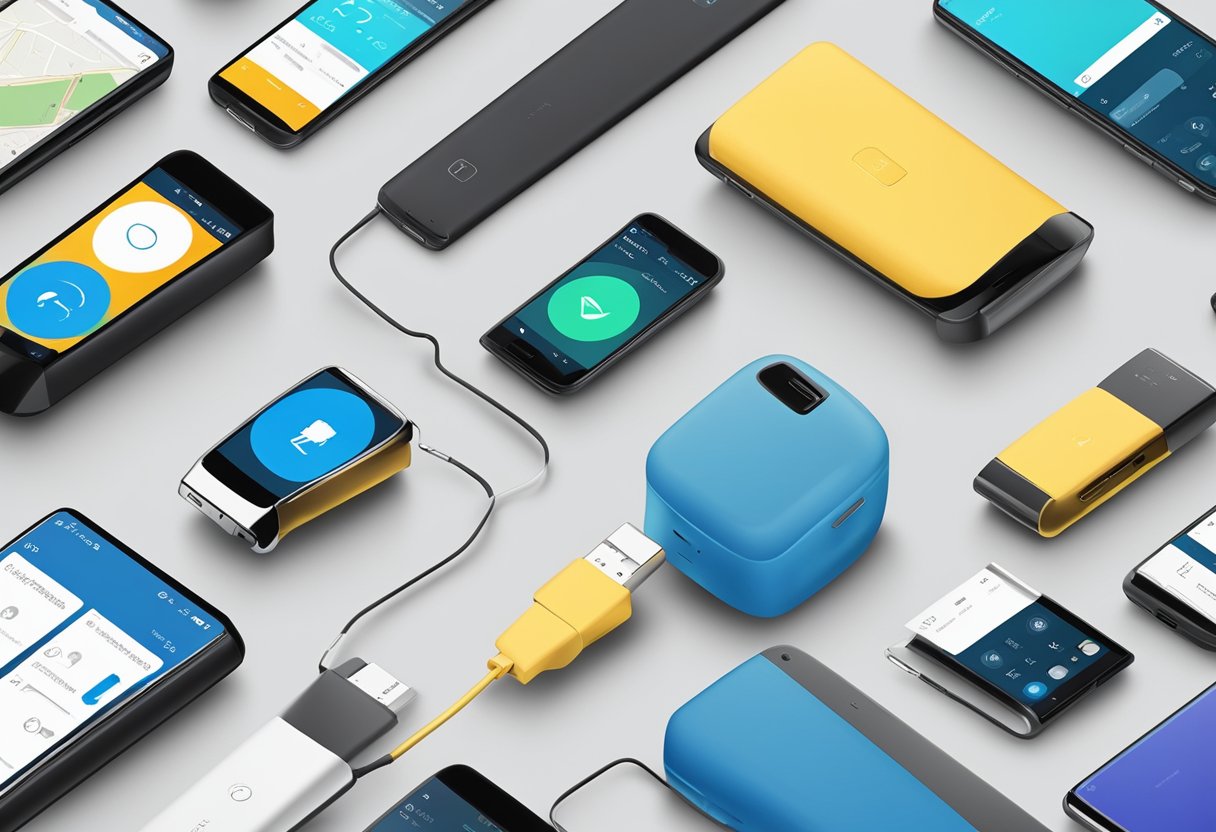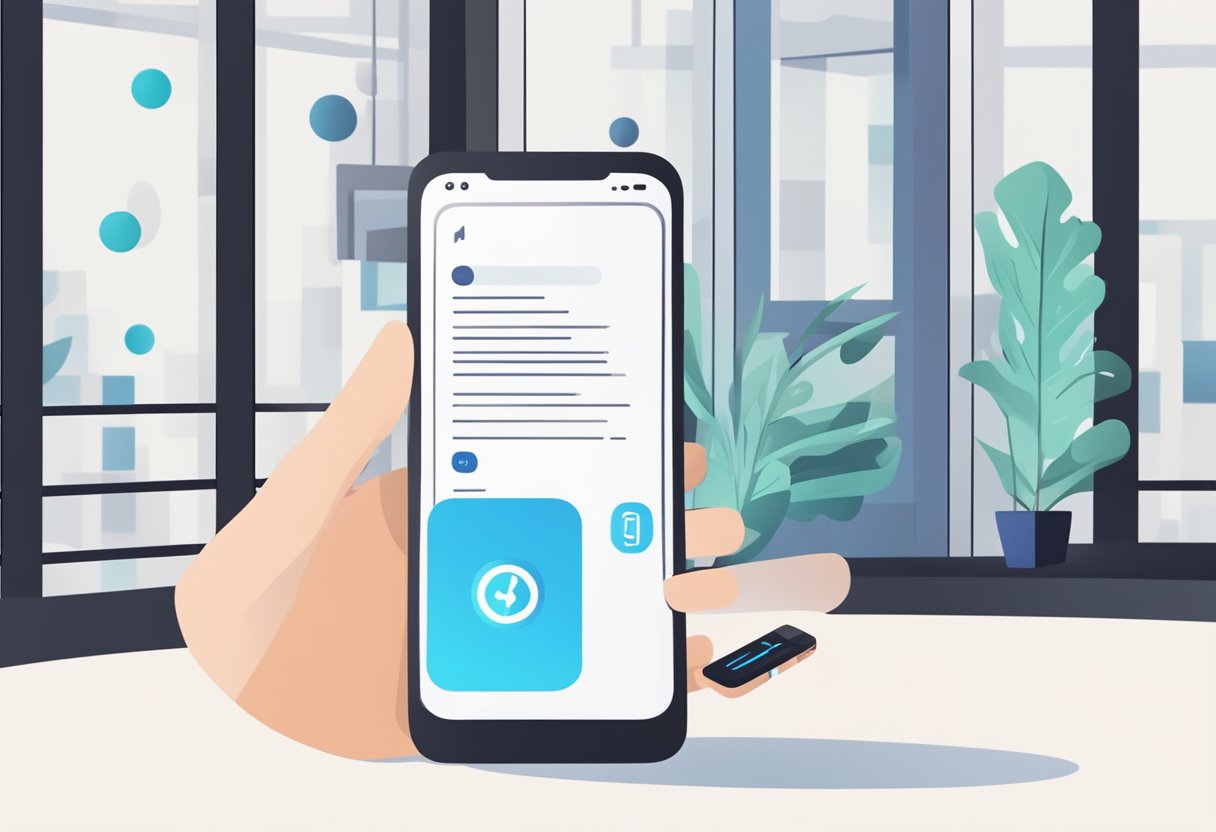React-native-bluetooth classic is a powerful tool that enables developers to build Bluetooth-enabled mobile apps using the React Native framework. With this technology, developers can create apps that communicate with a variety of devices, including sensors, printers, and other Bluetooth-enabled hardware.

One of the main advantages of using React-native-bluetooth classic is its ease of use. The technology provides a simple, straightforward interface that allows developers to easily integrate Bluetooth functionality into their apps. This makes it an ideal solution for developers who want to add Bluetooth capabilities to their apps without having to spend a lot of time learning a complex API.
Another benefit of React-native-bluetooth classic is its flexibility. The technology supports a wide range of Bluetooth devices and protocols, which means that developers can use it to build apps that communicate with a variety of hardware devices. This makes it an ideal solution for developers who need to build apps that work with multiple types of devices.
Índice De Conteúdo
Getting Started with React Native Bluetooth Classic
React Native Bluetooth Classic is a powerful tool for integrating Bluetooth functionality into your React Native application. With this library, you can easily connect to and communicate with Bluetooth Classic devices, such as printers, keyboards, and other peripherals. In this section, we will cover the basic steps required to get started with React Native Bluetooth Classic.
Installation
To install React Native Bluetooth Classic, you will need to use a package manager such as npm or yarn. First, navigate to the root directory of your React Native project and run the following command:
npm install react-native-bluetooth-classic --save
Alternatively, if you are using yarn, you can run the following command:
yarn add react-native-bluetooth-classic
Once the installation is complete, you will need to link the library to your project. To do this, run the following command:
react-native link react-native-bluetooth-classic
Basic Configuration
After installing and linking React Native Bluetooth Classic, you will need to configure your project to use the library. First, you will need to import the library into your project:
import BluetoothSerial from 'react-native-bluetooth-classic';
Next, you will need to initialize the BluetoothSerial object:
const bluetooth = new BluetoothSerial();
Once the BluetoothSerial object is initialized, you can use it to discover nearby Bluetooth devices, connect to devices, and send and receive data. For example, to discover nearby devices, you can use the following code:
bluetooth.discoverDevices()
.then(devices => {
console.log(devices);
})
.catch(error => {
console.error(error);
});
In this code, the discoverDevices() method is called to search for nearby Bluetooth devices. When the search is complete, the method returns an array of devices. This array can then be logged to the console for further analysis.
Overall, getting started with React Native Bluetooth Classic is a simple process that can be completed in just a few steps. By following the steps outlined in this section, you can quickly add Bluetooth functionality to your React Native application and communicate with a variety of Bluetooth Classic devices.
Core Concepts
React-native-bluetooth classic is a library that allows developers to interact with Bluetooth devices using React Native. To use this library, there are a few core concepts that developers must understand.
Bluetooth Permissions
Before an app can interact with Bluetooth devices, it must request permission from the user. This is done by adding the necessary permissions to the app’s manifest file. The BLUETOOTH and BLUETOOTH_ADMIN permissions are required for basic Bluetooth functionality. Additional permissions may be required depending on the specific use case.
Device Discovery
To interact with a Bluetooth device, the app must first discover it. This is done by scanning for nearby devices using the startDiscovery() method. Once a device is discovered, its name and address can be obtained using the getName() and getAddress() methods.
Pairing and Connecting
Once a device has been discovered, it can be paired and connected to. Pairing is the process of establishing a secure connection between the app and the device. This is done using the createBond() method. Once the device is paired, it can be connected to using the connect() method.
Overall, understanding these core concepts is essential for working with React-native-bluetooth classic. By mastering these concepts, developers can build powerful apps that interact with Bluetooth devices in a seamless and efficient manner.
Data Communication
Sending Data
React-native-bluetooth classic provides a simple yet powerful way to send data between devices. The write method can be used to send data to a connected Bluetooth device. This method takes a string or an array of bytes as input and sends it to the connected device. It is important to note that the maximum size of data that can be sent in a single write operation is limited by the Bluetooth protocol. Therefore, it is recommended to split large data into smaller packets and send them in chunks.
Receiving Data
Receiving data from a connected Bluetooth device is also straightforward with react-native-bluetooth classic. The read method can be used to read data from the connected device. This method takes a callback function as input, which is called when data is received from the device. The received data is passed as an argument to the callback function. It is important to note that the read method does not guarantee that all the data sent by the device will be received in a single callback. Therefore, it is recommended to use a buffer to accumulate the received data until all the data has been received.
Data Handling Best Practices
When handling data in react-native-bluetooth classic, it is important to follow some best practices to ensure reliable and efficient data communication. Here are some tips to keep in mind:
- Use a consistent data format: Both the sender and receiver should agree on a common data format to avoid any confusion or errors.
- Use data validation: Validate the received data to ensure that it is in the expected format and range. This will help prevent errors and unexpected behavior.
- Use error handling: Handle errors gracefully to avoid crashes or unexpected behavior. Use try-catch blocks or error callbacks to handle errors.
- Use data encryption: If the data being transmitted is sensitive, use encryption to ensure that it is secure and cannot be intercepted by unauthorized parties.
By following these best practices, developers can ensure reliable and efficient data communication using react-native-bluetooth classic.
Troubleshooting

Common Issues
React-native-bluetooth classic is a powerful tool for developers to implement Bluetooth functionality in their React Native applications. However, like any other software, it can encounter issues. Here are some of the common issues that developers may face while using React-native-bluetooth classic:
- Connection Issues: One of the most common issues is the inability to connect to a Bluetooth device. This can happen due to various reasons such as incorrect device address, device not being discoverable, or the device being out of range.
- Data Transfer Issues: Another common issue is the inability to transfer data between the device and the application. This can happen due to issues with the data format, incorrect data size, or incorrect data type.
- Compatibility Issues: React-native-bluetooth classic may not be compatible with all devices. Some devices may have different Bluetooth versions or protocols, which may cause compatibility issues.
Debugging Tips
When encountering issues with React-native-bluetooth classic, developers can use the following debugging tips to identify and resolve the issues:
- Check Device Address: Ensure that the device address is correct. A small typo in the device address can cause connection issues.
- Check Device Discoverability: Ensure that the Bluetooth device is discoverable. If the device is not discoverable, it cannot be connected to.
- Check Data Format: Ensure that the data format is correct. The data format should match the protocol used by the Bluetooth device.
- Check Data Size: Ensure that the data size is correct. If the data size is too large or too small, it can cause data transfer issues.
- Check Data Type: Ensure that the data type is correct. If the data type is incorrect, the data may not be transferred correctly.
By following these tips, developers can identify and resolve issues with React-native-bluetooth classic. With a little bit of troubleshooting, developers can ensure that their applications work seamlessly with Bluetooth devices.
Advanced Topics

Custom Bluetooth Services
One of the key features of react-native-bluetooth-classic is the ability to create custom Bluetooth services. This allows developers to create their own unique services that can be used to communicate with other devices. Custom services can be created using the BluetoothClassic.createService method, which takes a service UUID and an array of characteristics as parameters.
Developers can define the characteristics of the service by specifying their UUID, properties, and permissions. The properties of a characteristic determine how it can be read and written, while the permissions determine who can access it. Once the service is created, it can be added to the device’s Bluetooth stack using the BluetoothClassic.addService method.
Performance Optimization
When developing Bluetooth applications, it is important to optimize performance to ensure that the application runs smoothly and efficiently. One way to do this is by minimizing the amount of data that is transmitted over the Bluetooth connection.
Developers can achieve this by using the BluetoothClassic.writeWithoutResponse method to send data to the remote device. This method sends data without waiting for a response from the remote device, which can significantly reduce latency and improve performance.
Another way to optimize performance is by using the BluetoothClassic.read method to read data from the remote device in chunks. This method allows developers to specify the maximum amount of data that they want to read at a time, which can help to prevent buffer overflows and improve performance.
In conclusion, react-native-bluetooth-classic provides developers with a powerful set of tools for building Bluetooth applications. By leveraging custom services and optimizing performance, developers can create applications that are fast, efficient, and reliable.

